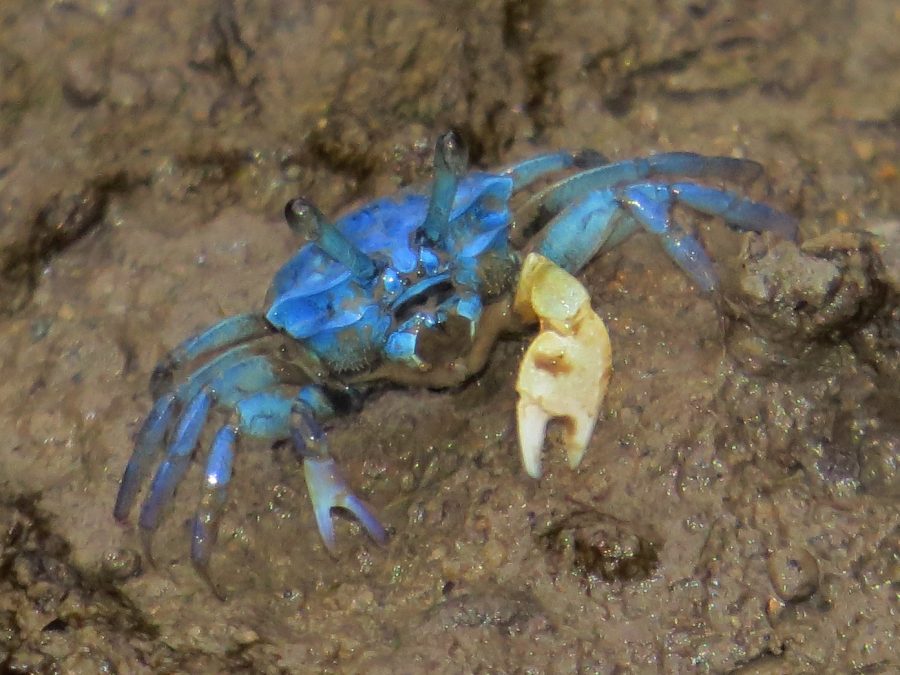I was certainly hoping they were different species as that would mean that I had found something new. The first step is always to find a few examples of each. A single strange individual could be a mutant, so it is important to find a few specimens to confirm that you are indeed observing a species. Both types passed this test. The crabs above are small juveniles, less than a centimetre across, so my next move was to try and find larger specimens.
Well the colour forms are still different, however the dark juveniles become dark blue as they grow and the sky blue juveniles develop patches of black. Usually, I would look for features such as the fiddler crab's nose. On the blue crab above, the nose is clearly visible but on the black crab, the dark colour and highlights from the camera flash obscure the nose. Even with dozens of photos, slight differences in perspective, focus and reflection obsured the key features. That will teach me not to examine live specimens in the field with a hand lens! There were not many of these crabs, however, so I was reluctant to disturb them.
As the crabs get larger, it becomes much harder to tell which is which. I am assuming that the top photo is from a dark juvenile. The lower photo is a blue juvenile with carapace fading to black. The mid-sided crabs are scarce so the sequence of colour changes is not clear.
The small adults of the dark form (now the red form) often have spots on their carapace which can be bright blue. The blue form does not appear to get these spots.
Finally, we arrive at photos of fully grown crabs. So far I have not found any clear morphological differences between the colour forms, so I have to conclude that they both colour forms belong to the same species, Uca dussumieri. This species is fairly uncommon, so it is difficult to find enough examples to fill in all the gaps and reveal any patterns or lack of patterns. Each colony has only a dozen adult crabs and a score of juveniles.
Sometimes there are gradients between colour forms, particularly in fiddler crabs, however I find that I can identify crabs on the creek bank quite easily as one colour form or other across most of the size range. With the exception of the last pair of photos all the other photos are matched for location, date and size of crab. At this stage, I consider the colour forms to be real and not analogous to the gradients of colour forms which I have seen in other fiddler crab species. Further investigation is needed.










No comments:
Post a Comment